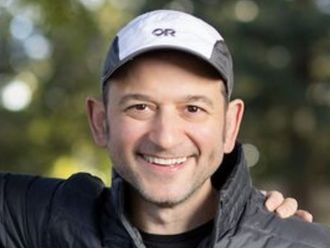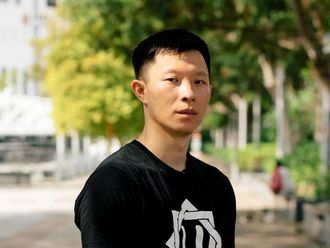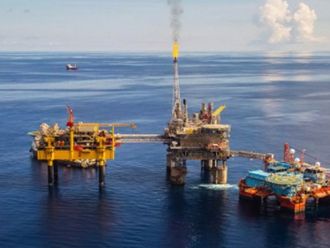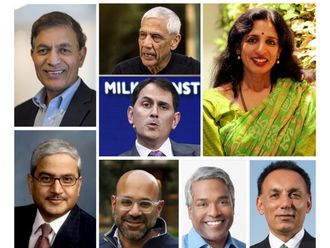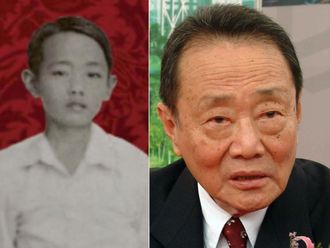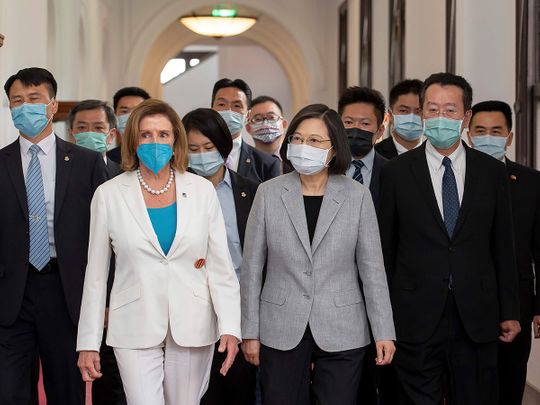
On Tuesday US House Speaker Nancy Pelosi flew into Taiwan on a historic visit that included a meeting with Taiwan’s president in the face of growing diplomatic face-off with China. Pelosi, who is the highest-ranking US official to visit Taiwan in almost quarter-century, next heads to South Korea and Japan before returning to the US.
She flew aboard a US Air Force jet and was greeted on the tarmac at Taipei’s international airport by Taiwan’s foreign minister and other Taiwanese and American officials. The reason Pelosi’s visit ratcheted up tension between Beijing and Washington: China wants foreign government officials to respect the island’s sovereignty.
As per Beijing’s “One China” principle, Taiwan is part of the People’s Republic of China (PRC). In the days before Pelosi’s Taiwan visit, US President Joe Biden tried to calm tempers, insisting there’s no change in America’s long-standing “One China policy”, which recognises Beijing’s position but allows informal relations and defence ties with Taipei.
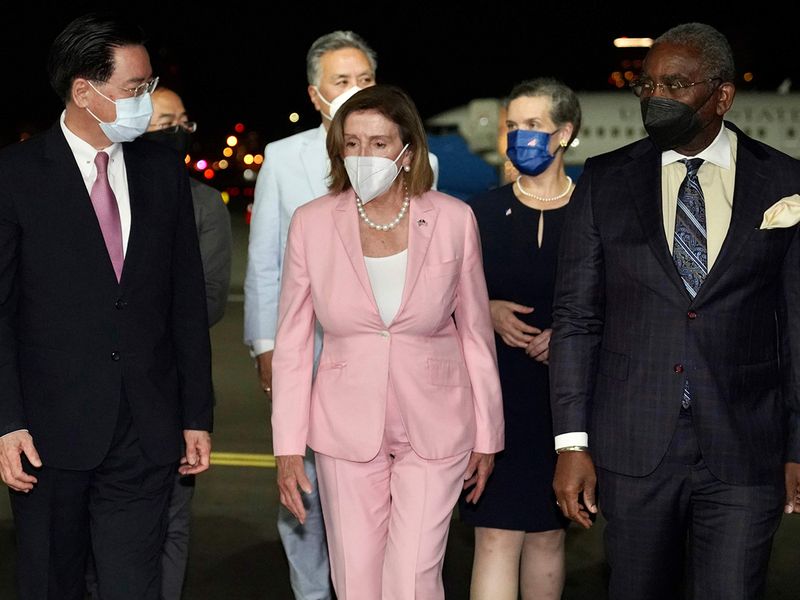
Why did Pelosi take the trip?
Over the years Pelosi has developed a reputation of making audacious moves, sometimes without the full concurrence of the White House. While Pelosi, 82, a close ally of Biden (both are members of the Democratic Party) has helped guide the US President’s legislative agenda through Congress, she has maintained a tough foreign policy position. The Speaker led a top Congressional delegation to the Ukrainian capital of Kyiv during the spring.
There were reports that the White House was not fully behind the current Taiwan trip, but it ultimately let the Speaker take a call on the matter. Given the clearly defined separation of powers in the US federal structure, there was little the President could do to prevent the visit but Biden did initially oppose the trip, claiming it would unnecessarily escalate an already heightened state of tension in the region. The US has no official diplomatic relations with Taiwan.
What is China’s position on Taiwan?
As part of Beijing’s One-China principle, Taiwan’s eventual “unification” has been China’s long-standing official position. Taiwan, according to Beijing, is bound by an understanding — called the 1992 Consensus — that was agreed between China and Taiwan. Representatives of the Chinese Communist Party (CCP) and the Kuomintang (KMT) party (that ruled Taiwan back in the 90s) reached this understanding. It paved the way towards creating a diplomatic basis for cross-strait exchanges which began in the early 1990s.
The 1992 Consensus has led to cross-Strait consultation, enhancing trust between the two sides of the Strait, and helped develop cross-Strait relations. However, the two sides don’t agree on the full content of this consensus. Chinese President Xi Jinping has noted that the 1992 Consensus reflects an agreement that “the two sides of the Strait belong to one China and would work together to seek national reunification.”

What is America’s stance?
US official position on Taiwan is in agreement with the One-China policy. This is based on several documents, such as three US-China communiqués reached in 1972, 1978, and 1982; the Taiwan Relations Act, passed by the US Congress in 1979; and a series of assurances that US (under President Ronald Reagan) conveyed to Taiwan in 1982. Broadly the US “acknowledges the Chinese position that there is but one China and Taiwan is part of China” and that the PRC is the “sole legal government of China”.
Washington rejects any use of force to settle the dispute. It maintains cultural, commercial, and other ties with Taiwan, carried out through the American Institute in Taiwan (AIT). America says it has the ability to come to Taiwan’s defence, while not actually committing to doing so — a policy known as strategic ambiguity, according to Council on Foreign Relations. Overall the US wants to maintain stability in the Taiwan Strait, and prefers status quo.
What has the Chinese military reaction been?
China announced a series of military drills, which followed its promises of “resolute and strong measures” if Pelosi went through with her visit. The People’s Liberation Army said the maneuvers would take place in the waters and skies near Taiwan and include the firing of long-range ammunition in the Taiwan Strait.
China’s official Xinhua News said the army planned to conduct live-fire drills from Thursday to Sunday across multiple locations. An image released by the news agency indicated that the drills were to take place in six different areas in the waters surrounding Taiwan. China had sent 21 planes flying toward Taiwan, 18 of them fighter jets, per Taiwan’s Defence ministry.
The rest included an early warning plane and an electronic warfare plane. Taking a note of the escalation, US said there was no reason for Beijing to take any action upon Pelosi’s visit because Washington’s One China policy has not changed.
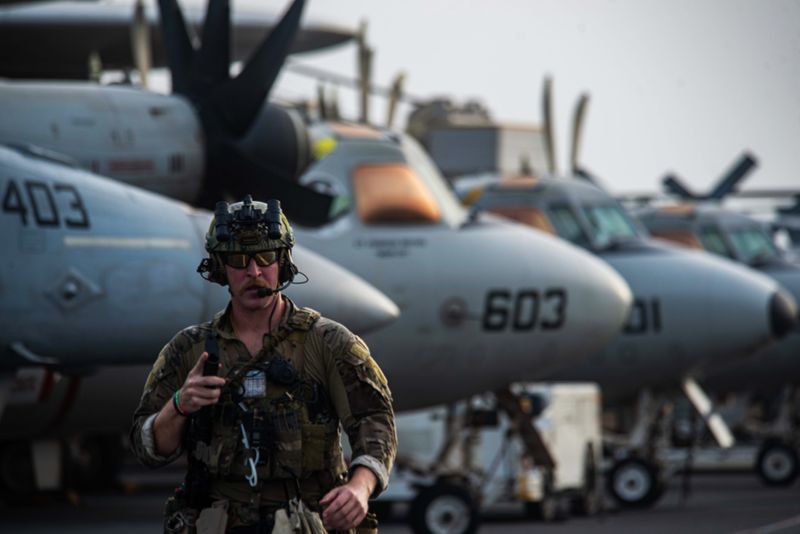
Where is the US army positioned?
Given the heightened state of tensions post Pelosi’s visit, the American military has beefed up its presence and movements in the region. The aircraft carrier USS Ronald Reagan and its strike group were in the South China Sea on Monday, per AP.
The Reagan, the cruiser USS Antietam and the destroyer USS Higgins left Singapore and moved north toward their home port in Japan. The carrier has an array of aircraft, including F/A-18 fighter jets and helicopters, as well as sophisticated radar systems and other weapons.
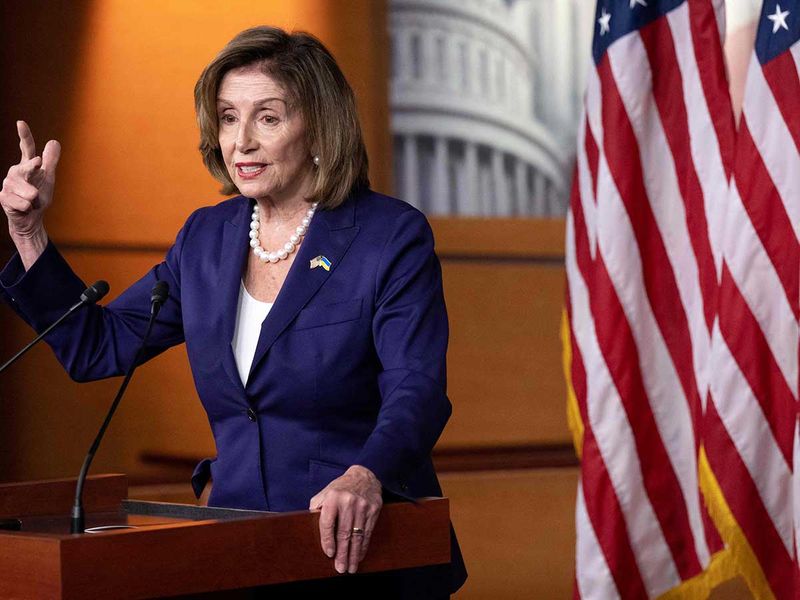
Profile: Who is Nancy Pelosi?
Nancy Pelosi is in the headlines after a trip to Taiwan that set off a huge diplomatic row. The Speaker of the US House of Representatives made the high profile visit despite Beijing’s reservations.
She is the most senior elected US official to visit Taiwan in more than 25 years. Pelosi was re-elected to a fourth term as Speaker of the House of Representatives in 2021, making her second in line to the presidency after Vice-President Kamala Harris.
As the 52nd Speaker of the House, she made it to record books in 2007 when she was elected the first woman to serve as Speaker of the House. Pelosi made history again in January 2019 when she held onto her position as the second-in-line to the presidency — the first person to do so in more than six decades.
Born in Baltimore, Maryland to an Italian-American family, Pelosi was the only daughter and the youngest child of her parents. Her dad was the Democratic mayor of Baltimore and her initiation into politics was unsurprising. As part of her father’s campaign events, Pelosi was groomed in the nitty-gritty of politics from an early age.
She attended John F. Kennedy’s inaugural address when he was sworn in as President in January 1961. Pelosi attended the Institute of Notre Dame, and graduated from the Trinity College in 1962.
Pelosi has represented San Francisco, California’s 12th District, in Congress for more than three decades. In 2013, she was inducted into the National Women’s Hall of Fame at a ceremony in Seneca Falls, the birthplace of the American women’s rights movement.
As the chief architect of critical legislation under two Democratic administrations, including the Affordable Care Act and the American Rescue Plan, Pelosi is well known for her public service and work towards lowering the day-to day costs for families, increase paychecks and create jobs.
In 2019, she initiated the fourth-ever impeachment proceedings in US history against President Donald Trump. Now in the twilight of her career, Pelosi’s active political life and moves are seen by many as the career politician’s attempt to burnish a lasting legacy.


